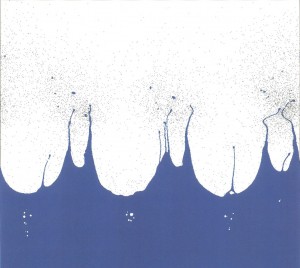Extending the stockpile’s lifespan
When people think about nuclear weapons, most probably picture warheads sitting silently on missiles or within secure hangers near airbases. The bombs themselves appear cold and unchanging.
Nothing could be further from the truth. Nuclear weapons are changing all the time, says Scott Doebling of Los Alamos National Laboratory, who recently took leave from managing the lab’s Verification and Validation (V&V) program to take an assignment with the National Nuclear Security Administration (NNSA).

Simulating nuclear weapons requires a detailed understanding of material behavior. Here, a large shock will cause solid copper to eject material. The simulation, which ran for 88 hours on the world’s second-fastest supercomputer, Blue Gene/L, described the behavior of 800 million atoms over 1 nanosecond.
“You’re dealing with systems that have radioactive isotopes in them. As the isotopes decay over time, they emit radiation that changes the properties of the materials surrounding them in the warhead.”
Just how does prolonged exposure to nuclear radiation change a material’s properties? How do those changes alter the way a weapon performs? Will an older bomb still perform as intended? Will it remain safe and intact if it crashes in an aircraft or burns in a fire?
At the height of the Cold War, the United States had easy answers to those questions. First, it replaced weapons every 10 to 15 years. Second, it tested weapons to ensure they performed as intended. Finally, America kept adding to its stockpile.
But in 1992, the United States halted underground nuclear testing, reduced the size of the existing nuclear stockpile and stopped making nuclear weapons.
Since the nation no longer built new warheads, it needed to extend the lifespan of the ones it had. It also needed to assess the performance of those aging and reconditioned weapons — and it had to do it without testing.
Today, the Department of Energy relies on computational simulations to predict weapons performance, employing several of the world’s largest supercomputers and some of the most sophisticated computer models ever created. Yet the models raise questions of their own. They are large, complex combinations of smaller models. Often, those models are based on different understandings of how physics works. They sometimes deal with temperatures and pressures where the physics are not well understood. Running such complex software also requires compromises that could change a model’s ability to predict future warhead behavior.
The task of the Los Alamos V&V team is to quantify those uncertainties and improve our confidence in the simulations.
Inherent Problems
Today’s computer models produce incredibly detailed results that appear to precisely simulate the behavior of weapons and materials as they age.
Yet do they? The uncertainties start with construction of the models themselves.
“Many of the mathematical models we use to understand physics are limited in what they explain,” Doebling says. One theory, such as electrodynamics, may elucidate the behavior of a few atoms individually. Yet it cannot portray the transfer of heat or force through a block of material made of those atoms. That would take a second theory, such as thermodynamics or mechanics.




